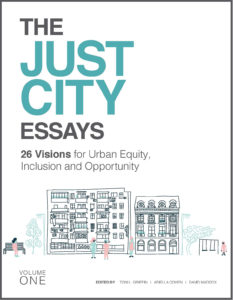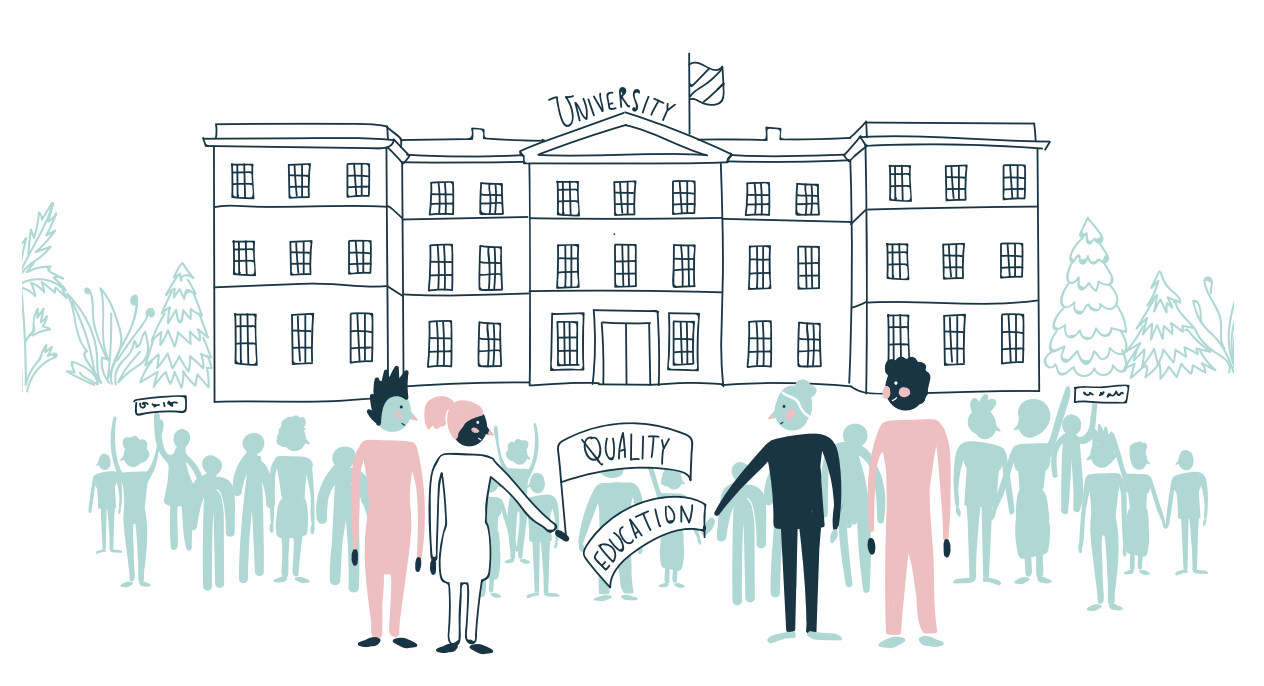“Five years ago, the Harvard Graduate School of Design’s Just City Lab published The Just City Essays: 26 Visions of Inclusion, Equity and Opportunity. The questions it posed were deceptively simple: What would a just city look like? And what could be the strategies to get there? These questions were posed to mayors, architects, artists, philanthropists, educators and journalists in 22 cities, who told stories of global injustice and their dreams for reparative and restorative justice in the city.
 These essays were meant as a provocation, a call to action. Now, during these times of dissonance, unrest, and uncertainty, their contents have become ever more important. For the next 26 weeks [starting June 15, 2020], the GSD and the Just City Lab will republish one essay a week here and at designforthejustcity.org. We hope they may continue conversations of our shared responsibility for the just city.
These essays were meant as a provocation, a call to action. Now, during these times of dissonance, unrest, and uncertainty, their contents have become ever more important. For the next 26 weeks [starting June 15, 2020], the GSD and the Just City Lab will republish one essay a week here and at designforthejustcity.org. We hope they may continue conversations of our shared responsibility for the just city.
We believe design can repair injustice. We believe design must restore justice, especially that produced by its own hand. We believe in justice for Black Americans. We believe in justice for all marginalized people. We believe in a Just City.”
—Toni L. Griffin, Professor in Practice of Urban Planning, founder of the Just City Lab, and editor of The Just City Essays
Resistance, Education and the Collective Will of the Just City
By Jack Travis
“What has happened is that in the last 20 years, America has changed from a producer to a consumer. And all consumers know that when the producer names the tune, the consumer has got to dance. That’s the way it is. We used to be a producer—very inflexible at that, and now we are consumers and, finding it difficult to understand. Natural resources and minerals will change your world. The Arabs used to be in the third world. They have bought the second world and put a firm down payment on the first one. Controlling your resources will control your world. This country has been surprised by the way the world looks now. They don’t know if they want to be Matt Dillon or Bob Dylan. They don’t know if they want to be diplomats or continue the same policy—of nuclear nightmare diplomacy. John Foster Dulles ain’t nothing but the name of an airport now… . The idea concerns the fact that this country wants nostalgia. They want to go back as far as they can—even if it’s only as far as last week. Not to face now or tomorrow, but to face backwards. And yesterday was the day of our cinema heroes riding to the rescue at the last possible moment. The day of the man in the white hat or the man on the white horse—or the man who always came to save America at the last moment— someone always came to save America at the last moment—especially in “B” movies. And when America found itself having a hard time facing the future, they looked for people like John Wayne. But since John Wayne was no longer available, they settled for Ronald Reagan and it has placed us in a situation that we can only look at like a ‘B’ movie.”—Gil Scot Heron, “B-Movie,” 1981 “If the Negro is not careful he will drink in all the poison of modern civilization and die from the effects of it. Ultimately it will do us very little good to simply get more opportunities in the Global South or elsewhere if we do not ask ourselves and resolve the question, ‘Do we really want to continue to design while mimicking the kinds of socio-political society that marginalized us in the first place?” —Marcus Garvey
What makes great buildings, spaces and places? It is when those structures or spaces reflect and serve the people of the community for which they are intended. It is when they lift the spirit while providing shelter and functional use; when they foster positive aesthetic and tactile relationships between the buildings, spaces and/ or places themselves and the people they are intended to serve.
I penned that statement more than 20 years ago at a moment when I was striving to define my practice as an architect and interior designer. It was relevant then and remains so today as we struggle to imagine a just city being born out of the troubled world we occupy today. Continue reading on designforthejustcity.org…
